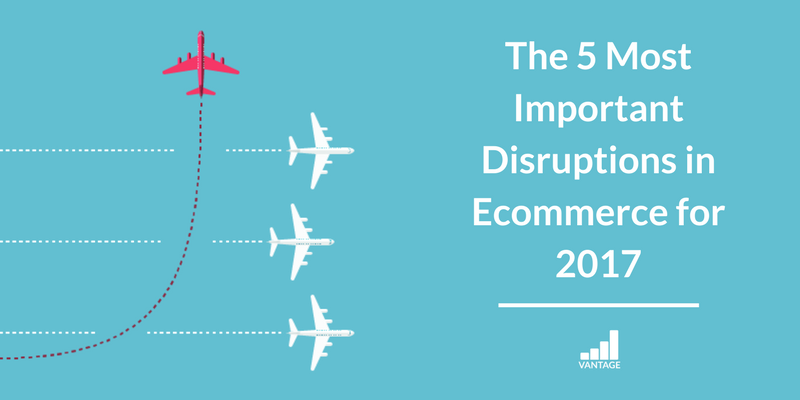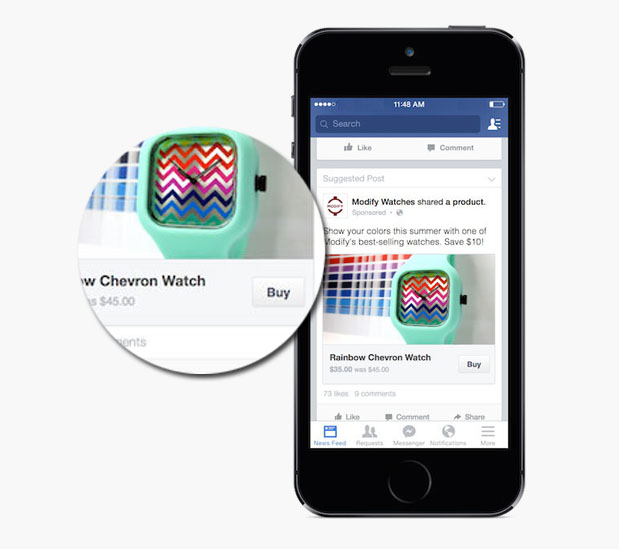
The 5 Most Important Disruptions in Ecommerce for 2017
Ecommerce is only going to continue to grow, and businesses must either provide their customers with digital avenues to purchase, or they’ll be left behind in the dust. Every ecommerce business owner knows that it’s a competitive space, and those that don’t offer a niche that’s different or unique from giants such as Amazon or Wal-Mart will struggle. For ecommerce businesses that are looking to stay ahead of the curve and differentiate themselves, here are 5 ecommerce disruptions to be aware of in 2017.

1. Online Shopping Will Incorporate More Elements of In-Store Shopping
As ecommerce capabilities grow and shoppers become more savvy, consumers are wanting a more seamless online experience that incorporates the best elements of online shopping and in-person, such as not having to pay or wait for delivery. In turn, ecommerce retailers are responding with cheaper shipping and faster delivery, such as Amazon’s affordable same-day delivery options.

2. Growth of Hybrid Shopping and Fulfillment Models
It used to be that shopping in-store and shopping online were mutually exclusive, but the lines between physical and ecommerce shopping are becoming more and more blurred. More specifically, customers are shopping and placing orders online, but then opting for pickup in-store instead of delivery. This has created a more affordable alternative to same-day shipping for retailers, and customers are happily choosing same-day pickup for their goods. The trend has even spawned technology like Curbside, which allows for brick-and-mortar stores to provide online shopping and same day pickup without hosting an ecommerce store. I am sure you’ve been seeing much more of this click and collect model, especially from food retailers.

3. Rise of the Omnichannel Shopper
The omnichannel shopper is one who shops both online and in-store, and many of these consumers use mobile devices to research options and compare prices when they’re physically in the store. What this means for retailers who offer both ecommerce and brick and mortar stores is that you have to ensure there’s cohesion between your online and your physical store and that each avenue is optimized to sell. For example, many retail stores have optimized their apps to detect when a shopper is physically in the store and offer them a coupon during their visit.

4. The Strengthening Link Between Social and Shopping
Today, being social media savvy is an integral component of digital marketing, and social media is being used to build brands, communicate images, and provide product information. As such, social media is now another selling tool that can drive customers to your website, help you convert more traffic into customers, and build customer loyalty. It’s no surprise that the major social sites are also introducing buy buttons that allow users to make in-platform purchases from their favorite stores, and it won’t be long before social selling gives the traditional ecommerce model a run for its money.
5. Mobile Shopping Is the Way of the Future
While shopping from smartphones is nothing new, what’s changed is the sheer number of consumers who are doing it. By 2020, mobile ecommerce is expected to represent 45 percent of online sales. What does this mean for your ecommerce store? That it’s essential for your website, cart, and checkout to be optimized for mobile access, that all your content be fully responsive and mobile friendly, and that the payment options you offer online are conducive to mobile shopping (think convenient options like PayPal, Amazon Payments, Apple Pay, etc).

Ecommerce and the way consumers shop in general are evolving and changing at a rapid rate. In effect, retailers are either going to have to get on board or get out of the game. As customers spend more time shopping online, and as technology provides increasing convenience, retailers are having to adapt as well. This is why it’s so important to pay attention to ecommerce disruptions, and the significant ones for 2017 include the increasing pull toward mobile, social, and hybridized selling.





Leave a Reply
You must be logged in to post a comment.